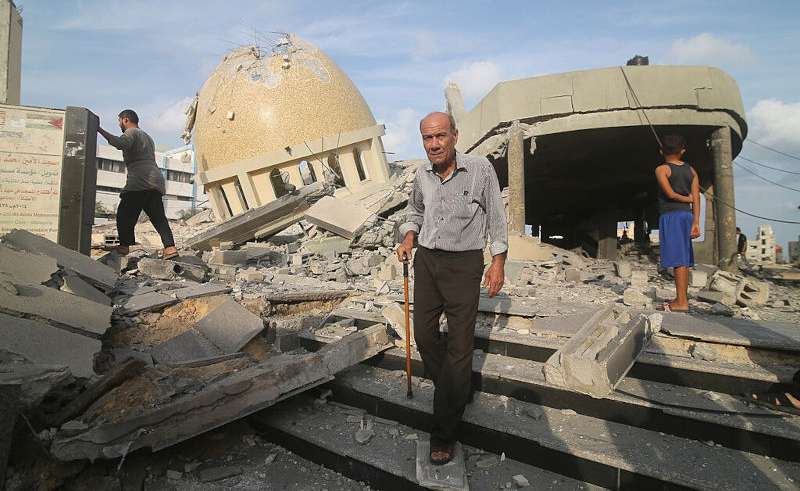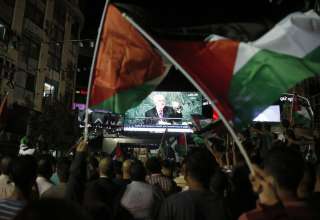By Binoy Kampmark
When does it stop? Australia’s close ties with Israel continue to hold despite the incessant slaughter taking place in the Gaza strip, with the connivance of any number of allies and arms manufacturers who have priorities that are somewhat different from the aim of preserving life.
While quibbling, scrapping and sniping over such matters as recognising Palestinian statehood take place in Canberra, the blood-soaked realities of Israel’s campaign in Gaza continue. Of late, these realities extend to historically significant war graves in the area.
Gaza features burial places for combatants from the two World Wars. In 2023, the BBC ran a piece featuring the tending, and tender exploits of the head gardener for the Commonwealth War Graves Commission (CWGC), Ibrahim Jaradah. Regarding the Gaza War Cemetery, one of two belonging to the CWGC, in which 3,691 dead are buried, including 263 Australians, Ibrahim speaks of being its caringly mindful son.
The sentiment is understandable: his great-grandfather, Rabie Jaradah, came to work for the Imperial War Graves Commission, the precursor of the CWGC, in Beersheba in 1923. When he and his family were made refugees with the founding of Israel in 1948, they fled to Gaza, assuming the solemn role of custodianship for the graves.
Ibrahim duly explains: “When I was young, it was my dream to work here.” As a child, he assisted his father in the office while also discharging various tasks such as planting seeds and making compost. “We feel it’s very important. These people gave their lives for their countries, and we’re trusted to take care of this historic place.”
The tormenting convulsions of the strip have not made tending the graves easy. In 2006, the Gaza War Cemetery suffered partial damage from an Israeli missile. Israel duly paid £90,000 to the United Kingdom by way of compensation. In 2009, 350 headstones required repairing in the aftermath of a three-week assault on Gaza by the IDF. “Each time we come back, we have to return things to how they looked in the past,” a responsible Ibrahim explained.
With this poignant sense of caretaking in mind, the slaughter taking place across this piece of tormented real estate offers a stark and bitter reality. Almost 40,000 dead Palestinians have become occupants of the territory’s soil. And now, the stubbornness of the Australian government to come clean about Israeli predations against the graves has been laid bare.
Reports about the damage done by Israel’s military efforts during the latest conflict were already seeping through different news channels earlier this year, despite not disturbing the conscience or consciousness of Australian politicians. In January, CNN reported more generally that the Israeli military had been responsible for desecrating “at least 16 cemeteries” in the course of its Gaza campaign.
The IDF, inevitably, offered an unconvincing balm, suggesting that it always “ensures optimal professional conditions and respect for the deceased.” That said, the CNN report did not shy away from noting that the IDF had also “used cemeteries as military outposts.”
It was just a matter of time before interest was piqued regarding the fate of graves in the Commonwealth War Cemetery. In February, the Palestine Solidarity Network Aotearoa (PSNA) called upon the New Zealand government to investigate whether some 23 New Zealand graves in the site had been affected.
The group cited the relevant Guardian report noting that the relevant damage “included an ancient Roman cemetery and the Commonwealth war cemetery, where more than 3,000 British and commonwealth soldiers are buried after dying in battles during the first and second world wars”. The PSNA National Chair, John Minto, was sufficiently riled to declare that Israel had “always flouted international law and the desecration of cemeteries adds to the long list of its war crimes in Gaza.”
With such discomforting information swirling through various channels, the silence from Canberra proved so deafening as to command the interest of Greens Senator David Shoebridge. In a parliamentary hearing featuring representatives from the Defence Department, the senator noted that they had “known that the cemetery containing the graves of 263 Australian soldiers in Gaza [had] been damaged by the State of Israel since at least March 2024.”
The defence representative in question, in acknowledging that damage had been inflicted on the cemetery, also noted that that the head gardener’s house had been destroyed. When asked whether the Department had inquired of the IDF whether Australian war graves had been damaged, the answer was clear: “We did not make inquiries to the Israeli military.”
On being pressed on the matter of whether a demand for compensation had been made to the Israeli government for such damage, the answer was equally feeble. “As such, the Commonwealth War Graves [Commission] they’ll make an assessment when they’re able to get into the site.”
All this pales before the broad stroke brutality against Palestinian graveyards across Gaza. Even as they are being swelled by the dead in this current war, those who perished in previous conflicts can have no peace in such places as Al-Shujayya, Beit Hanoon and Khan Younis. Voltaire’s sapient remark comes to mind: “To the living we owe respect, but to the dead we owe only the truth.” And a nasty truth it is.







